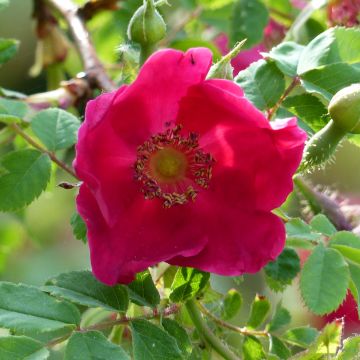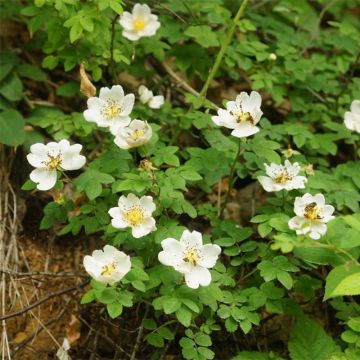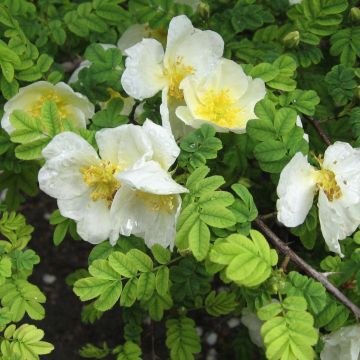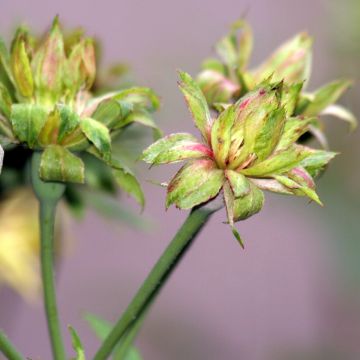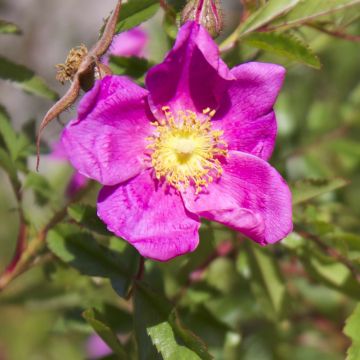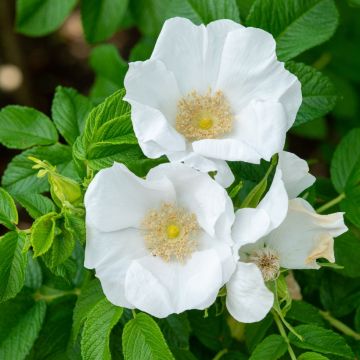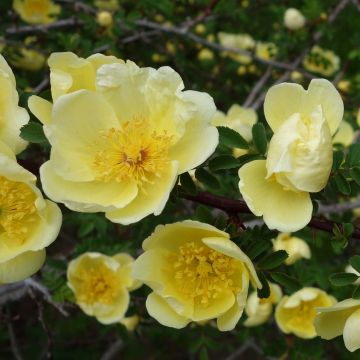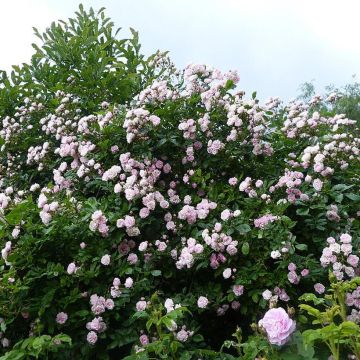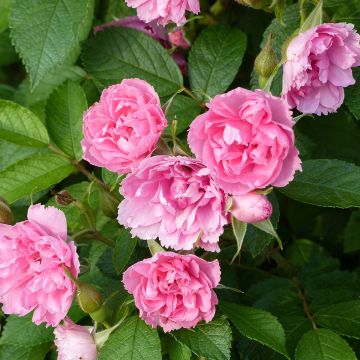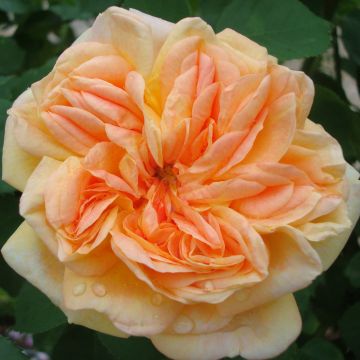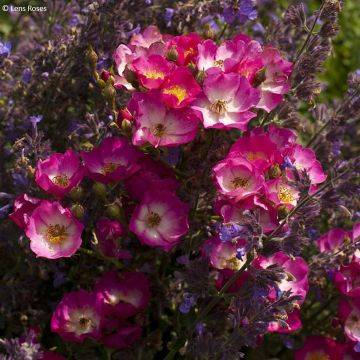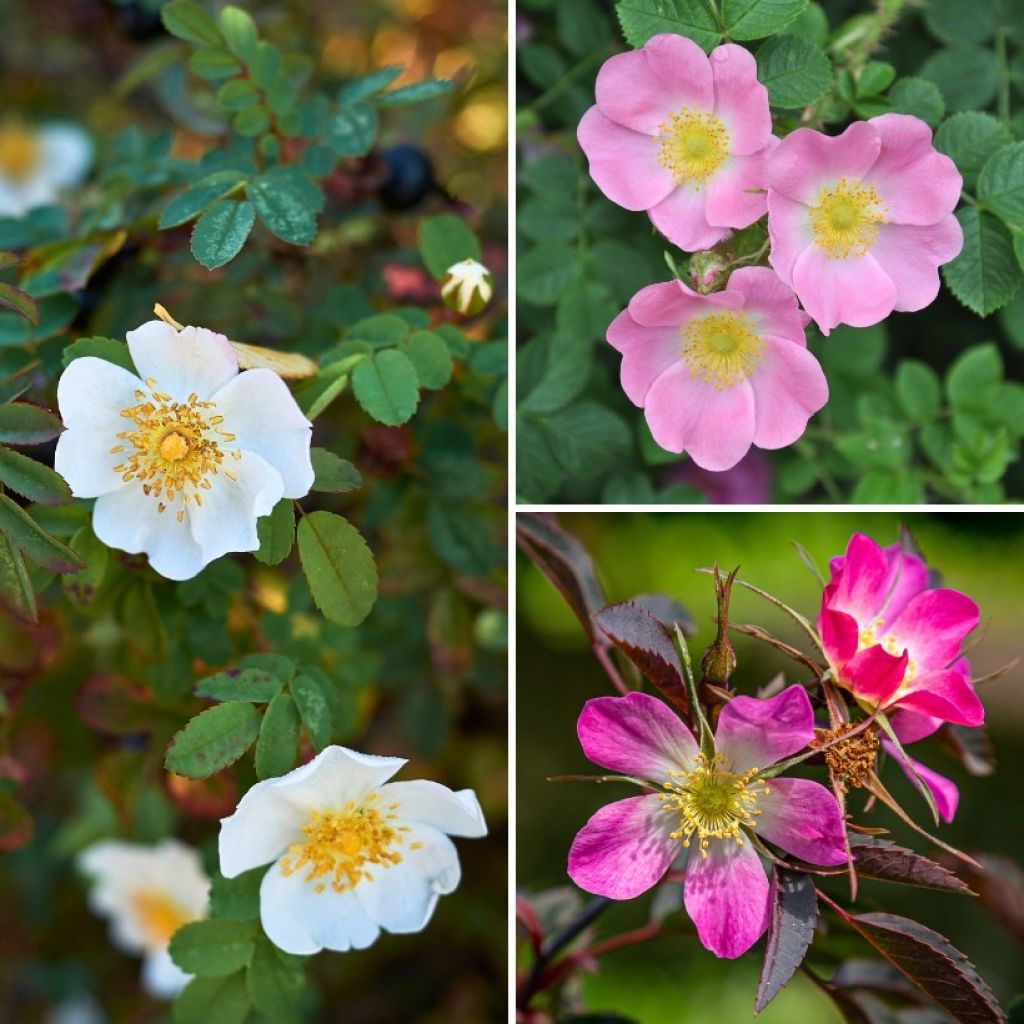

Wild Roses Collection
Wild Roses Collection
Rosa canina, pimpinellifolia, glauca (rubrifolia)
This plant carries a 24 months recovery warranty
More information
We guarantee the quality of our plants for a full growing cycle, and will replace at our expense any plant that fails to recover under normal climatic and planting conditions.
From €5.90 for pickup delivery and €6.90 for home delivery
Express home delivery from €8.90.
Delivery to Corse prohibited: UE law prohibits the import of this plant from mainland France to Corse as part of the fight against Xylella fastidiosa. Please accept our sincere apologies.
More information
Does this plant fit my garden?
Set up your Plantfit profile →
Collection items (3 plants)
Description
We offer a collection of three wild roses, hardy and robust deciduous shrubs that will bring nature into your garden. Their light and decorative foliage accompanies a flowering of dog roses, ranging from white to pink, from May to July depending on the varieties. These plants adapt to a wide range of soils and tolerate both cold and drought. Ideal for creating informal hedges or countryside borders, these wild roses require little maintenance and attract beneficial wildlife with their nectar-bearing flowers and colourful fruits in autumn.
Collection details:
1 x Dog Rose - Rosa canina: a vigorous bush reaching 2 to 3 m in height. Its thorny stems bear light green foliage and simple flowers, pale pink with yellow centres, in June. Its orange-red hips persist throughout winter, nourishing birds and small animals. It thrives in dry, chalky soils.
1 x Burnet Rose - Rosa pimpinellifolia: a compact bush about 1 to 1.5 m tall, this rose features finely cut dark green foliage. Its white flowers with golden centres bloom from May onwards. Very hardy and wind-resistant, it adapts to poor, sandy soils.
1 x Red-leaved Rose - Rosa glauca (Rosa rubrifolia): distinguished by its blue-green foliage with purplish reflections, the Red-leaved Rose reaches 1.5 to 2 m in height. Its simple flowers, soft pink with golden stamens, appear in June. Its prominent red hips provide a decorative touch in autumn. It prefers well-draining soils and sunny locations.
These wild roses, offered as bare roots, should be planted in autumn and winter, from November to March, when the plants are dormant. This period ensures good root development before the return of warmer days. Choose a sunny or semi-shaded location, in well-drained soil, even poor or chalky.
To create a countryside hedge or a natural border, arrange the roses according to their height. The Dog Rose, the tallest (up to 3 m), should be placed at the back. The Red-leaved Rose, with purplish highlights, in the middle, and the Burnet Rose, more compact (1 to 1.5 m), at the front. Maintain a distance of 80 cm to 1 m between each plant to allow for harmonious growth.
For a loose hedge, plant 2 to 3 shrubs per linear metre to create a dense plant screen. After planting, water generously to ensure good root-to-soil contact. Natural mulching will help retain moisture and limit weeds during the initial months.
To accompany the wild roses in this collection, plant two Common Dogwoods (Cornus sanguinea), whose bright red branches will illuminate the garden in winter. Their foliage turning purple in autumn will harmonise with the purplish foliage of the Red-leaved Rose. Also, add three European Spindle Trees (Euonymus europaeus). Their bright pink capsules with orange seeds provide a unique decorative touch in autumn, extending visual interest after the summer flowering of the roses. Their flexible growth and bright green foliage perfectly complement the natural feel of the scene. To structure the foreground, place five Birchleaf Spiraeas (Spiraea betulifolia 'Pink Sparkler'). Their summer pink blooms prolong the floral display, and their rounded silhouette (1 to 1.5 m) balances the composition.
With a spacing of 80 cm to 1 m between each plant, the collection will cover approximately 10 to 12 m². This informal, natural hedge will offer changing colours throughout the year.
Report an error about the product description
Plant habit
Flowering
Foliage
Botanical data
Rosa
canina, pimpinellifolia, glauca (rubrifolia)
Rosaceae
Other Botanical or wild Roses
Planting and care
Wild roses prefer a sunny location (at least 4 to 5 hours of sun per day) but sheltered from the scorching rays of midday and strong winds. Roses appreciate loose, permeable, and humus-rich soils. They will adapt to any garden provided that the soil is well-worked and drained. To plant your bare-root rose, work the soil to a depth of 40 cm by crumbing the soil well and placing a base dressing such as dried blood or dehydrated horn at the bottom of the planting hole, position your young plant by covering the top of the root ball with 3 cm of soil, backfill and water generously to eliminate air pockets. In dry weather, water regularly for a few weeks to facilitate root development. Also, remember to provide your rose with special rose fertiliser that enhances flowering.
Planting period
Intended location
Care
This item has not been reviewed yet - be the first to leave a review about it.
Traditional Roses
Haven't found what you were looking for?
Hardiness is the lowest winter temperature a plant can endure without suffering serious damage or even dying. However, hardiness is affected by location (a sheltered area, such as a patio), protection (winter cover) and soil type (hardiness is improved by well-drained soil).

Photo Sharing Terms & Conditions
In order to encourage gardeners to interact and share their experiences, Promesse de fleurs offers various media enabling content to be uploaded onto its Site - in particular via the ‘Photo sharing’ module.
The User agrees to refrain from:
- Posting any content that is illegal, prejudicial, insulting, racist, inciteful to hatred, revisionist, contrary to public decency, that infringes on privacy or on the privacy rights of third parties, in particular the publicity rights of persons and goods, intellectual property rights, or the right to privacy.
- Submitting content on behalf of a third party;
- Impersonate the identity of a third party and/or publish any personal information about a third party;
In general, the User undertakes to refrain from any unethical behaviour.
All Content (in particular text, comments, files, images, photos, videos, creative works, etc.), which may be subject to property or intellectual property rights, image or other private rights, shall remain the property of the User, subject to the limited rights granted by the terms of the licence granted by Promesse de fleurs as stated below. Users are at liberty to publish or not to publish such Content on the Site, notably via the ‘Photo Sharing’ facility, and accept that this Content shall be made public and freely accessible, notably on the Internet.
Users further acknowledge, undertake to have ,and guarantee that they hold all necessary rights and permissions to publish such material on the Site, in particular with regard to the legislation in force pertaining to any privacy, property, intellectual property, image, or contractual rights, or rights of any other nature. By publishing such Content on the Site, Users acknowledge accepting full liability as publishers of the Content within the meaning of the law, and grant Promesse de fleurs, free of charge, an inclusive, worldwide licence for the said Content for the entire duration of its publication, including all reproduction, representation, up/downloading, displaying, performing, transmission, and storage rights.
Users also grant permission for their name to be linked to the Content and accept that this link may not always be made available.
By engaging in posting material, Users consent to their Content becoming automatically accessible on the Internet, in particular on other sites and/or blogs and/or web pages of the Promesse de fleurs site, including in particular social pages and the Promesse de fleurs catalogue.
Users may secure the removal of entrusted content free of charge by issuing a simple request via our contact form.
The flowering period indicated on our website applies to countries and regions located in USDA zone 8 (France, the United Kingdom, Ireland, the Netherlands, etc.)
It will vary according to where you live:
- In zones 9 to 10 (Italy, Spain, Greece, etc.), flowering will occur about 2 to 4 weeks earlier.
- In zones 6 to 7 (Germany, Poland, Slovenia, and lower mountainous regions), flowering will be delayed by 2 to 3 weeks.
- In zone 5 (Central Europe, Scandinavia), blooming will be delayed by 3 to 5 weeks.
In temperate climates, pruning of spring-flowering shrubs (forsythia, spireas, etc.) should be done just after flowering.
Pruning of summer-flowering shrubs (Indian Lilac, Perovskia, etc.) can be done in winter or spring.
In cold regions as well as with frost-sensitive plants, avoid pruning too early when severe frosts may still occur.
The planting period indicated on our website applies to countries and regions located in USDA zone 8 (France, United Kingdom, Ireland, Netherlands).
It will vary according to where you live:
- In Mediterranean zones (Marseille, Madrid, Milan, etc.), autumn and winter are the best planting periods.
- In continental zones (Strasbourg, Munich, Vienna, etc.), delay planting by 2 to 3 weeks in spring and bring it forward by 2 to 4 weeks in autumn.
- In mountainous regions (the Alps, Pyrenees, Carpathians, etc.), it is best to plant in late spring (May-June) or late summer (August-September).
The harvesting period indicated on our website applies to countries and regions in USDA zone 8 (France, England, Ireland, the Netherlands).
In colder areas (Scandinavia, Poland, Austria...) fruit and vegetable harvests are likely to be delayed by 3-4 weeks.
In warmer areas (Italy, Spain, Greece, etc.), harvesting will probably take place earlier, depending on weather conditions.
The sowing periods indicated on our website apply to countries and regions within USDA Zone 8 (France, UK, Ireland, Netherlands).
In colder areas (Scandinavia, Poland, Austria...), delay any outdoor sowing by 3-4 weeks, or sow under glass.
In warmer climes (Italy, Spain, Greece, etc.), bring outdoor sowing forward by a few weeks.




































